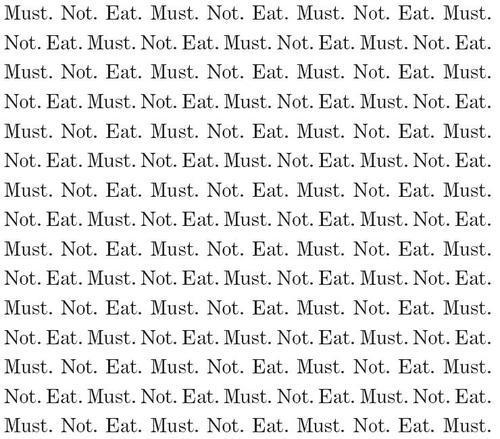
A journey through Tumblr’s plentiful population of self-harm blogs is morbidly transfixing. You can, and I did, get lost in a sea of images posted for and by legions of hurting, sick, and confused Tumblr users. There have always been spaces on the internet — often personal blogs like Xangas and blogspots — devoted to depictions of self-harm lifestyles, many specifically focusing on self-mutilation and eating disorders. But Tumblr’s quick reblogging format is perfect for populating the numerous “pro-ana” (pro-anorexia) and “thinspo” (thin inspiration) and “selfharm” (self-mutilation) blogs. Tumblr is a perfect site for fostering communities around niche interests and aesthetics, but what do they do when those niche interests and aesthetics are also psychological disorders?
Two days ago, Tumblr decided to address the plethora of blogs promoting self-harm through a revision of their content policy, to take effect next week:
Videos by VICE
Active Promotion of Self-Harm. Don’t post content that actively promotes or glorifies self-injury or self-harm. This includes content that urges or encourages readers to cut or mutilate themselves; embrace anorexia, bulimia, or other eating disorders; or commit suicide rather than, e.g., seek counseling or treatment for depression or other disorders. Online dialogue about these acts and conditions is incredibly important; this prohibition is intended to reach only those blogs that cross the line into active promotion or glorification.
They’re also adding PSA’s to the site, which will pop up when a user searches for flagged tags such as “pro-ana”, “thinspo”, or “purging.” The new policy has created both an outpouring of support and significant backlash from Tumblr community. Some say it hinders the free speech of Tumblr users; it undoubtedly does this, but nowhere is it written that social networking users are entitled to free speech. Some commend the policy for removing triggering language and images from the site. Others feel that removing spaces for self-harm to be discussed will further alienate those who participate in these behaviors: sure, talking about starving yourself on your Tumblr is unhealthy, but without Tumblr that person may just continue starving themselves in isolation.
I don’t self-harm and have no desire to be “thinspired.” In fact, I don’t even have a personal Tumblr. I’ve never been exposed to the self-harm content Tumblr is attempting to combat. So I decided to educate myself through reading some of these sites. It was a chilling education.

The self-mutilators, it seemed, generally know that something is wrong with their impulses and behaviors. Their blogs doubtlessly glorify depression, loneliness and self-violence, but they do also sometimes function as a way to reach out for help. They post about compulsion and about recovery and relapse. They also post highly graphic pictures of their bloody arms, already crosshatched with hundreds of scars. Sometimes they acknowledge that they suffer from a disease, and many of them talk about how they wish they could stop.
There’s a lot that’s sad about these self-mutilator blogs. And there’s a lot that’s sad about their sister self-harm blogs, the pro-eating disorder ones. Yet there’s something a bit more sinister about the pro-ana sites, if only because they so rarely mention disease or recovery. Much thinspiration is presented as a lifestyle choice or a standard of beauty.
Go to any pro-ana Tumblr and you’ll get lost in a sea of thinness: models and ballerinas tend to be favorites, but there are also lots of user-generated pictures, “real girl thinspo.” Alongside the pictures are food diaries and motivational JPEGs, their mantra the hackneyed, “Nothing tastes as good as skinny feels.”
But what I found especially notable throughout all the self-harm Tumblrs was one thing: the age and gender of the self-harmers. Almost without exception, every pro-ana or self-mutilation Tumblr I read was a high school or college aged girl. Although I’m sure there are self-harming men out there, young women were by and far the majority.
I don’t have enough space or time here to go into why I think this is the case—why young women often feel fat, ugly, and unworthy in our society, and why this leads to self-harming behaviors from starvation to cutting—but I will say that it’s obvious that excluding this content from Tumblr won’t eliminate the behaviors. As a culture we need to ask why these young women hate themselves so much and judge themselves so harshly.
There’s probably no group as susceptible to influence as high school kids. They already face pressure from so many sources; it’s irresponsible to provide a forum where sixteen-year-old girls can compare emaciated waists and compete for consuming fewer calories. These blogs, while certainly fostering a sense of community for the users, exist mainly to glorify self-abuse. I, for one, think Tumblr made the right call.
Follow Kelly Bourdet on Twitter: @kellybourdet



